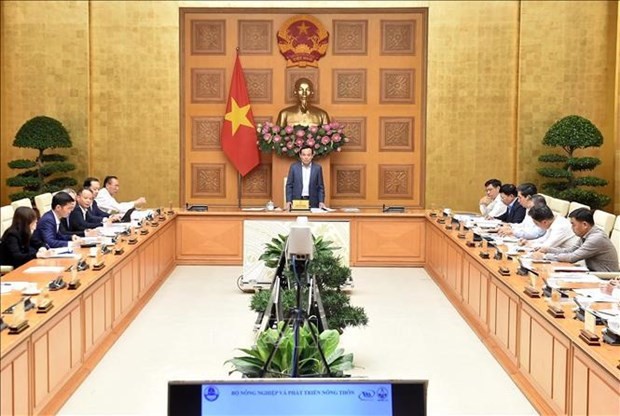
Deputy PM chairs meeting to discuss draft plan on fishing port, storm shelter system
Latest
 |
| The verification council for a plan on the system of fishing ports and storm shelters for fishing vessels for the 2021 - 2030 period, with a vision to 2050, convened a meeting in Hanoi on November 23 under the chair of Deputy Prime Minister Tran Luu Quang. |
According to the draft plan, there will be 173 fishing ports nationwide by 2030. The territorial waters off the central coast, from Quang Tri to Binh Thuan provinces, will accommodate the biggest number of fishing ports with 82 facilities, followed by the Gulf of Tonkin 45, the sea area off the southeastern region 33, and that of the southwest 13.
By 2030, Vietnam will have 160 storm shelters, comprising 30 at the regional level and 130 at the provincial level, to serve more than 90,000 fishing vessels.
The territorial waters off the central region will also be home to the most shelters, 73. The facilities for the Gulf of Tonkin, the southeastern, and the southwestern sea regions will number 47, 24, and 16, respectively.
The number of fishing ports nationwide will be raised to 180 by 2050.
During 2021 - 2025, priority will be given to developing infrastructure and services at fishing ports in major fishery hubs and building regional-level storm shelters, according to the draft plan.
The Ministry of Agriculture and Rural Development (MARD) estimated that nearly 58 trillion VND (nearly 2.4 billion USD) will be needed for developing essential infrastructure of fishing ports and storm shelters by 2030, including more than 18 trillion VND for the 2021 - 2025 period.
Discussing the draft, members of the verification council said fishing ports and storm shelters are important parts of fishery and socio-economic infrastructure, and investment in these facilities is necessary for the effective and sustainable exploitation of aquatic resources.
The plan aims to complete and modernize infrastructure to meet the fishery sector’s logistics demand, guarantee food safety, reduce post-fishing losses, and ensure safety for vessels and fishermen.
It will also help with fishery management, international integration, climate change adaptation, environmental and marine ecosystem protection, and defence-security safeguarding, they said.
In particular, as importing markets have been tightening rules on food safety and seafood traceability, exporting countries like Vietnam have to ensure the reliability of their entire fishery exploitation, importing, processing, and exporting process, council members noted.
Deputy Prime Minister Tran Luu Quang asked the MARD to consider opinions raised at the meeting to continue perfecting the draft before submitting it to the PM for approval.
He noted the plan must concurrently resolve existing issues and take into account current and future trends such as digital transformation, climate change response, and the “yellow card” warning over illegal, unreported, and unregulated (IUU) fishing.
It needs to provide orientations while being flexible enough for localities to carry out and ensure the fishing port system’s connectivity with other infrastructure systems like land, irrigation, transport, and power.
The plan must also ensure the projects listed are financially feasible, make use of non-State budget capital sources, and develop multifunctional facilities to prevent wastefulness and maximize their effectiveness, the Deputy Prime Minister requested.


















